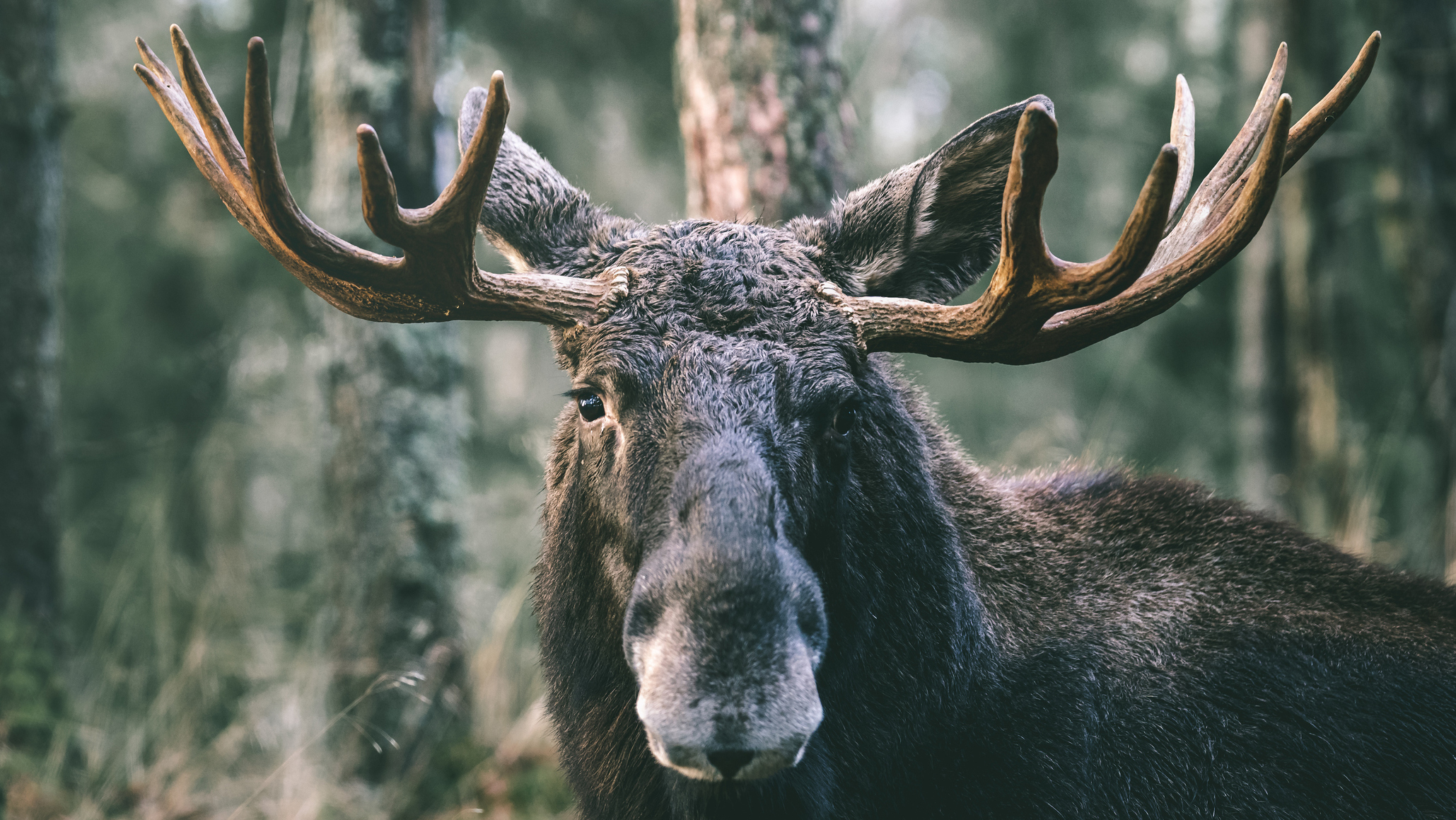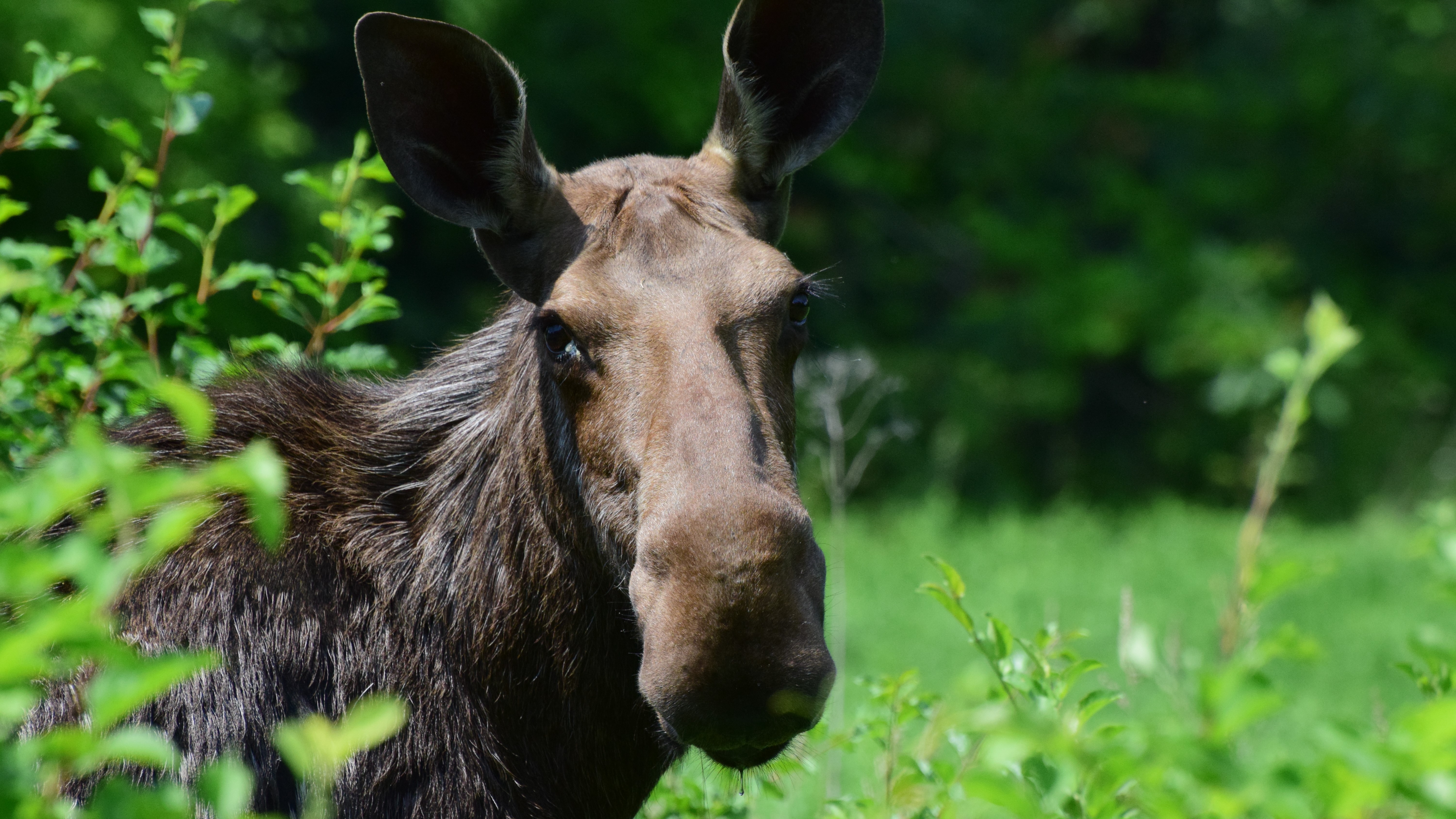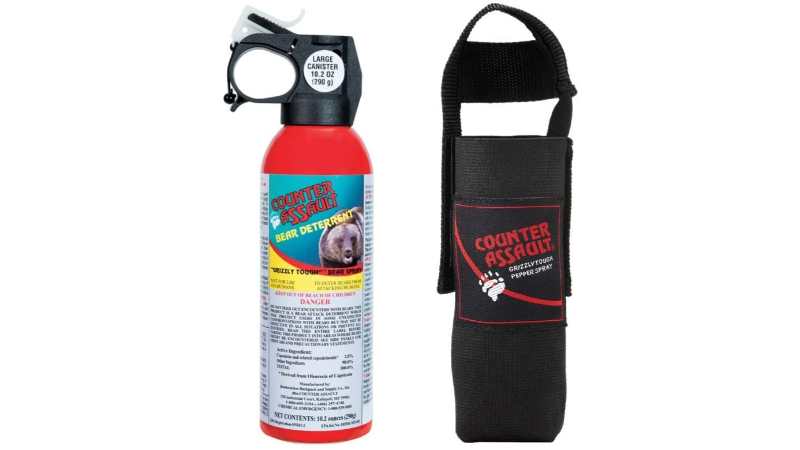
When you recreate around big mammals, you need to have a good handle on wildlife safety. If you get charged by wild boar, grab your trekking poles and fight back. If what’s lumbering towards you is a moose, jump behind the nearest tree. As for a grizzly bear sprinting full pelt towards you? Better unholster that bear spray.
But it turns out that there are occasions when you might use your bear spray on a beast other than a bear. I was reminded of this during a recent chat with wildlife expert Bo Welden, who leads wildlife tours in Yellowstone National Park. Welden's can of bear spray has seen plenty of action over the years, and not always on bears.
There have been a few moose stompings already this year, including one fatal attack in Alaska and several incidents in one week in Colorado. So defending yourself from moose might have been on your mind more lately. Is bear spray an option? Read on to find out whether bear spray is effective against the mighty moose, and how to use it as a last resort.

Does bear spray work on moose?
As we uncover in our article on using bear spray on mountain lions, bear spray – that's aerosol deterrent spray loaded with highly concentrated capsaicin and capsaicinoids – is effective against all mammals, and yes, that includes moose. Why it’s called bear spray then and not mammal spray isn’t totally clear, but it’s probably because you’re more likely to need it against a grizzly than other mammals.
Needless to say, bear spray should only be used as a deterrent when an animal is threatening you. It should never be used as a preventative measure when an animal, moose or otherwise, is just minding its own business in an area you want to hike through. It’s your responsibility to understand wildlife safety when you’re outdoors. That means keeping your eyes and ears peeled for wildlife, maintaining a safe distance of at least 25 yards when you encounter wildlife (100 yards for bears and wolves), and moving away if they move towards you.
If you do all this and still find yourself being charged by a moose, the best advice is to try to put something between yourself and said moose – a tree, a car or a large boulder. Moose can’t easily change direction so this is usually enough to save yourself from a trampling.
However, moose can run faster than you’d think judging by their spindly legs and if you realize it’s likely to reach you before you can get to the closest tree, then deploying bear spray is an appropriate measure, according to the wildlife officials at the City of Valdez in Alaska who say that pepper spray will work just as well on a moose as it does on a bear. Just make sure it’s your last resort.

How to use bear spray on moose
Using bear spray on a moose is largely the same as using bear spray on a bear, but for one key difference. To use bear spray against any mammal, you should do what you can to ensure you’re not downwind of the spray direction to avoid accidentally pepper spraying yourself, which will hurt almost as much as being trampled but with less lasting damage.
Remove the spray from the holster and hold it in two hands with your arms outstretched, one hand on the can and the other on the trigger. Wait until the moose is within ten yards (30 feet) of you then press down on the button and spray for at least four seconds, spraying in a zig-zag pattern.
Here comes the main difference: whereas when you spray a bear, you want to angle the can slightly down towards the bear’s face, which will be closer to the ground when it’s moving on all fours, a moose’s face is likely to be significantly higher. Most moose stand six feet tall at the shoulder, so if you spray in a slightly downward fashion you’ll most likely just pepper spray its knobbly knees. Even if you’re tall you’re probably going to need to aim slightly upwards for the spray to be effective.
When the moose has been deterred, holster that spray and get yourself out of the area swiftly. You can learn more in our article on how to use bear spray.







